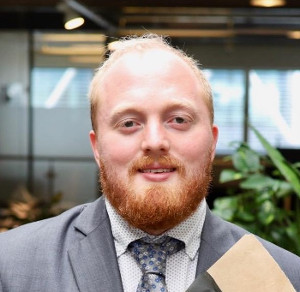
Latest news
2025
- New paper: Impact of Wall Property and Flow Rate Assumptions on Simulations of Flow-Induced Vibration of Intracranial Aneurysms available at: DOI: 10.1002/cnm.70101.
- Public talk at EPFL: On November 18th I’ll present Multidimensional modelling in DOLFINx at EPFL. The seminar is open to the public, for more information, see https://memento.epfl.ch/event/multidimensional-modelling-in-dolfinx/
- New paper: VaSP: Vascular Fluid-Structure Interaction Pipeline available at: DOI: 10.1016/j.softx.2025.102392
- New paper: On the numerical evaluation of wall shear stress using the finite element method available at: DOI: 10.1002/cnm.70086 published in International Journal for Numerical Methods in Biomedical Engineering
- New preprint: FESTIM v2.0: Upgraded framework for multi-species hydrogen transport and enhanced performance available at DOI: 10.48550/arXiv.2509.24760
- New preprint: DefElement: an encyclopedia of finite element definitions available at DOI: 10.48550/arXiv.2506.20188
- New paper: The latent variable proximal point algorithm for variational problems with inequality constraints available at: DOI: 10.1016/j.cma.2025.118181 published in Computer Methods in Applied Mechanics and Engineering
2024
- New paper: Spatial modeling algorithms for reactions and transport in biological cells available at: DOI: 10.1038/s43588-024-00745-x. For a general summary see: UCSD Research Alert
- October 21st-22nd: Two-day DOLFINx workshop at the MIT Plasma Science and Fusion Center. The workshop material is available at https://jsdokken.com/FEniCS-workshop.
- October 4th,11th: I will give two lectures as part of MU5MES01 of the Solid Mechanics of the Solid Mechanics Master of Sorbonne Université and ENPC. See MU5MES01@Github for more information.
- October 1st: I will give an introduction to the FEniCS library at École des Ponts, Paris. See Laboratory Navier for more information.
- I am organizing the FEniCS 24 conference at Simula Research Laboratory June 12th-14th in Oslo Norway. See: https://fenicsproject.org/fenics-2024/ for details
- v0.8.0 of the DOLFINx tutorial have been published
- New paper published: https://joss.theoj.org/papers/10.21105/joss.06451 for details
- Online panelist at the DOEPy meetup (April 24th), see: The Python Exchange for DoE Employees for the event recording details.
Older news
- Older news can be found here
About me
I am currently employed at Simula Research Laboratory as a Senior Research Engineer. I am also one of the administrators of the FEniCS Discourse forum and I am member of the FEniCS Steering Council. My focus is on finite element related software, usually extensions to the FEniCS project, or applications where FEniCS is employed.
Software
I am involved in the development of the following software:

-
The FEniCS project - An open-source computing platform for solving partial differential equations using the finite element method. End-user and core development resulting in the following papers, software and preprints
- DOLFINx: The next generation FEniCS problem solving environment
- FEniCSx_ii: FEniCSx trace - A module for non-conforming 3D-1D coupling
- SciFEM: Convenience tools and extensions to FEniCSx
- FEniCS-in-the-wild: Biomedical examples of FEniCS using wildmeshing
- FESTIM: An open-source code for hydrogen transport simulations
- Construction of arbitrary order finite element degree-of-freedom maps on polygonal and polyhedral cell meshes
- A multimesh finite element method for the Navier–Stokes equations based on projection methods
- Shape Optimization Using the Finite Element Method on Multiple Meshes with Nitsche Coupling
- Dolfin-adjoint - An algorithmic differentiation tool using pyadjoint to differentiate FEM models written in Dolfin and Firedrake. The contributions here have resulted in the following papers and preprints
- Scientific Computing @ Simula A web resource for best software practices for academics using Python
- dolfinx_mpc - An extension to DOLFINx supporting multi-point constraints (such as contact and slip conditions)
- adios4dolfinx - A checkpointing framework for DOLFINx
From 2019-2022 I worked as a Postdoctoral Research Associate at the University of Cambridge, working on the ASiMoV project with Chris Richardson and Garth N. Wells on the ASiMoV-project. The main goal of this project was to do the worlds first, high fidelity simulation of a complete gas-turbine engine during operation, simultaneously including the effects of thermo-mechanics, electromagnetics, and CFD. My main focus during this project was contact mechanics, multi-point constraints and large scale simulations with MPI.
From 2016-2019 I took my PhD at Simula Research Laboratory on the subject of Shape Optimization with Finite Element Methods.